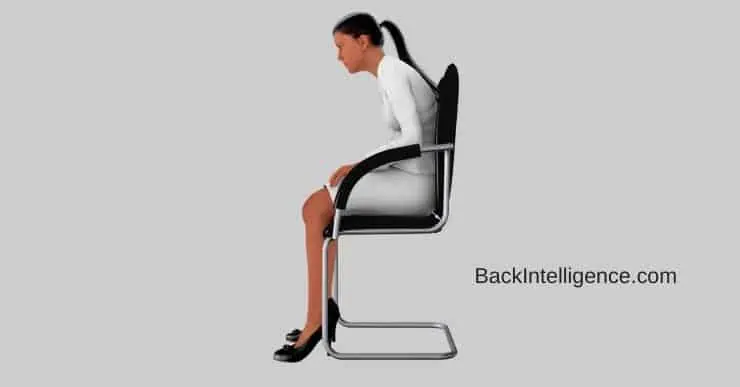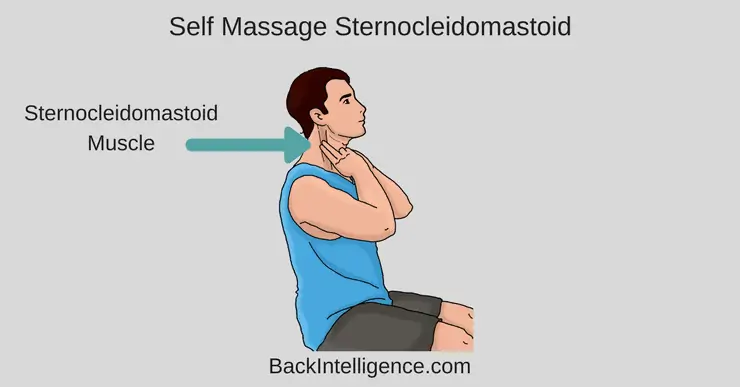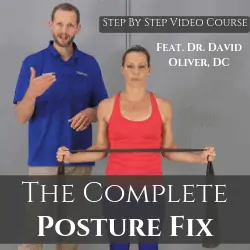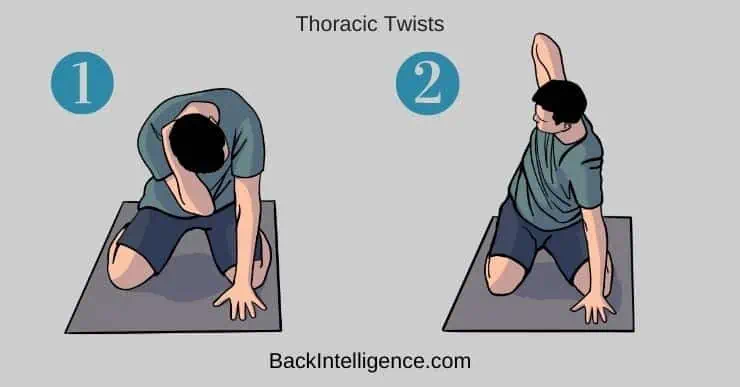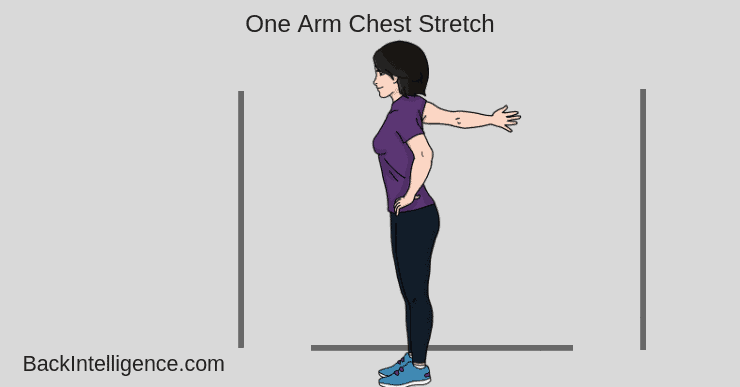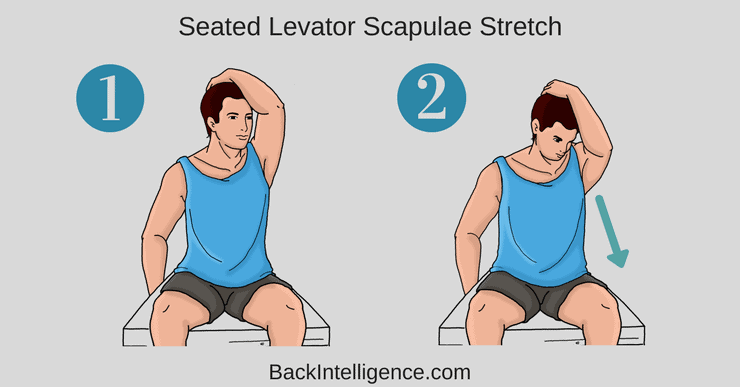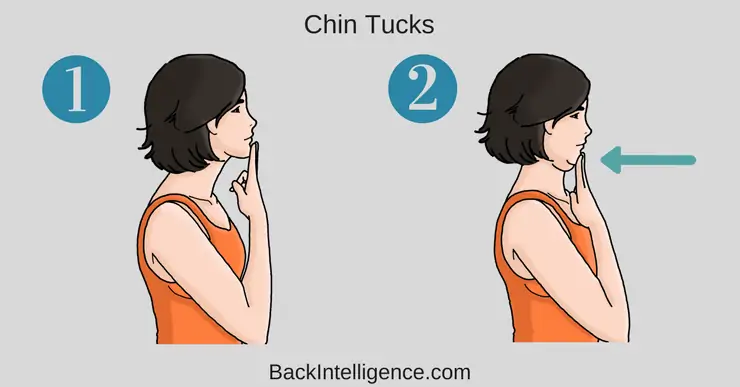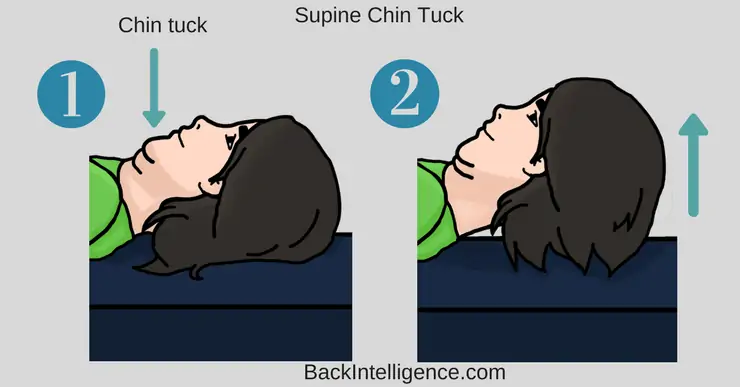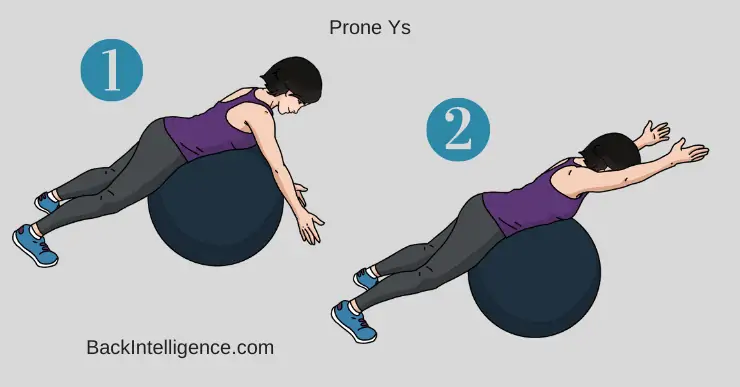
According to research done by Vladimir Janda in 1979, Upper Crossed Syndrome is a muscle imbalance where certain muscles are too weak (underactive) and others are too tight (overactive).
This imbalance can develop in individuals who maintain a slouched sitting position for prolonged periods of time.[1][4] The good news is there are specific exercises you can do improve this syndrome, and we included 7 exercises below.
This syndrome is characterized by rounded shoulders, thoracic kyphosis, forward head posture.
Upper crossed syndrome can result in an unattractive posture appearance, neck and shoulder pain, range of motion restrictions and more.[2][4]
Causes of Upper Crossed Syndrome
- Sitting in a prolonged hunched position[1][4][6]
- Prolonged usage of computers and mobile devices[4]
- Repetitive physical work, especially poor posture, can worsen this syndrome[3][4]
Symptoms of Upper Crossed Syndrome
- Forward Head Posture[3][4][5]
- Rounded upper back (kyphosis)[3][4][5]
- Elevated and protracted shoulders[3][4][6]
- Scapular winging[3][4][6]
- Decreased neck range of motion[2]
- Pain[2][4][6]
- Headache[4]
In this research study, exercise and stretching proved to be effective for correcting this syndrome. Let’s look at some exercises below.
7 Corrective Exercises for Upper Crossed Syndrome
Massage Sternocleidomastoid (SCM)
- Use your right thumb and forefinger to grasp the middle portion of your left SCM muscle until you feel a sensitive or tender spot in the muscle belly.
- Hold this area for 15 seconds.
- Release this area and move your forefinger and thumb up 1 fingerbreadth.
- Repeat holding each area as you move along the muscle until you reach the top of the muscle.
- Repeat on the right SCM.
** If you feel significant pain while doing this technique, lighten up the pressure that you’re using. Also, if you feel a pulse in the middle of your throat when doing this technique, move away from the midline of the neck.
The Complete Posture Fix (With Dr. Oliver)
Fix your Rounded shoulders & Fwd Head posture, get out of pain and increase your mobility.
Learn More
Thoracic Twists
- Kneel down on both knees with your butt touching the heels of your feet.
- Extend one hand on the floor for support and place the other hand on the back of your head.
- Twist your body toward the extended arm, and try to touch the elbow of the arm that is on your head, to the extended arm.
- Now twist your body to opposite direction and look up as your elbow goes up (Opening up your upper back)
- Aim for 10 repetitions on each side.
** Have the movement be predominantly in your upper back and not in your hips.
One Arm Chest Stretch
- Come close to a wall and stretch one arm behind you with the palm on the wall.
- Now lean forward and slightly away from the extended arm.
- Feel the stretch in your chest area.
- Hold for 30 seconds.
- Repeat on the other side
* Make sure you’re not just stretching you shoulder, but also the chest. Tweak the angle of your position to get the chest muscles.
* If you feel any pain, stop this exercise and try another one.
Levator Scapulae Stretch
- Begin in a seated position and grasp the bottom of your chair with your right hand and bring your left hand on your back of the head.
- Turn your head towards your left armpit
- Then using your left arm, gently push your head down looking towards your left armpit until you feel a slight stretch along with right side of your neck.
- Hold this position for 15 to 20 seconds.
- Repeat on the opposite side
- Aim for 3 repetitions of this stretch on each side.
Chin Tucks
This exercise will activate and strengthen your deep cervical muscles (front of the neck muscles).
- Place 2 fingers at the bottom of your chin.
- Gently tuck your chin in and retract your head backwards. At the same time, use your fingers to keep the chin tucked in the entire time.
- Hold the end position for 3 to 5 seconds.
- Relax your neck for a moment (Let the neck come fwd).
- Aim for 2 to 3 sets of 10 repetitions.
** You should feel like the back of your neck is lengthening or “pulling up”, and there will be packing in front of your neck.
Supine Chin Tucks
- While lying on your back, perform a chin tuck.
- From this tucked position slowly lift your head up off the bed/floor (whatever surface you are on) only about 3-4 inches.
- Hold this position for 5 seconds, then return to the starting position.
- Begin with 10 repetitions and gradually increase to 20-30x.
- Remember to keep breathing while doing this movement.
Prone Ys
This exercise is done for scapular stabilization and strengthening your back.
- Can be done off the side of a bed or while lying on your stomach on a large exercise ball with arms hanging straight down.
- Raise your arms up to a 45-degree angle (with thumbs up), making a Y between your arms and body. Only raise arms up to shoulder height.
- Now lower arms to starting position
- Build up to 2x 10
** Careful not to arch your low back as you lift your arms.
** Do not shrug your shoulders
Learn More
Related:
Rhomboid Muscle Pain
Frozen Shoulder Exercises
Thoracic Outlet Syndrome Exercises
I Threw My Back Out
Sources:
[1] Bae WS, Lee OH, Shin JW, et al. The effect of middle and lower trapezius strength exercises and levator scapulae and upper trapezius stretching exercises in upper crossed syndrome. J Phys Ther Sci. 2016; 28 (5): 1636-1639.
[2] Gillani SN, Quarat-ul-ain, Shakil ur Rehman, et al. Effects of eccentric muscle energy technique versus static stretching exercises in the management of cervical dysfunction in upper cross syndrome: a randomized control trial. J Pak Med Assoc. 2020; 70 (3).
[3] Mujawar JC & Sagar JH. Prevalence of upper cross syndrome in laundry workers. Indian J Occup Environ Med. 2019; 23(1): 54-56.
Corrective Exercise Specialist (NASM-CES), Certified Personal Trainer (NASM-CPT), Professional Dancer
As a long time back sufferer Leon found unique methods to alleviate his pain using natural methods including self massage, exercise/stretching and postural habits. He founded Backintelligence.com to empower others to fix their postures and ease their back pain from home.
